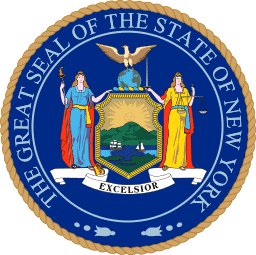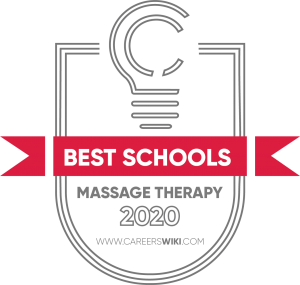…
There are 18 massage schools in New York that state officials have approved.
Some of the institutions award vocational certificates, which take between six months and two years to earn. There are also associate’s degree programs that last two years or longer. Instruction and real-world training prepare graduates for a state exam to become licensed practitioners.
The Empire State is an excellent place to study and practice massage therapy. There are various types of schools and a wide range of employers. Practitioners receive higher salaries and wages than their contemporaries in most other states.

This regulatory agency, governed by the state Education Department’s Board of Regents, issues licenses to professionals in more than 50 occupations “to ensure public protection.”
The office sets criteria for massage therapy education programs, maintaining a website that lists approved schools. It also creates instruction, training, and exam requirements for prospective practitioners; determines whether applicants are eligible for state licensure; and enforces license renewal and continuing education rules.
These officials investigate allegations of professional misconduct, taking legal action when warranted. Those who violate laws and regulations are subject to censure, reprimand, or fines. The state may suspend or revoke a license.
Most massage therapy schools require students to have no more than a high school diploma or GED. It is critically important to enroll at an accredited postsecondary institution with a program that the New York Office of the Professions recognizes.
Curricula must total 1,000 or more clock hours, including at least 200 hours of anatomy, physiology, and neurology classes. The state also mandates 150 hours of kinesiology or myology, 100 hours of pathology, and 150 hours of massage theory and techniques.
At least 325 other hours are devoted to technique and practice. Of these, 150 hours must involve administering massage methods and other therapies to real clients. Seventy-five hours are to cover hygiene and first aid. Programs specialize in different modalities, though the state requires Eastern and Western techniques.
To become a massage therapist in New York, a school graduate has to obtain a state license by applying online and paying a fee to the state office. Applicants must pass the New York State Massage Therapy Examination. They may take the test in January or August, registering beforehand with CASTLE Worldwide Inc.
Practitioners renew their licenses every three years. They must take 36 hours of continuing education classes each time.
We selected the schools below based on the programs that they offer, accreditation, student population, graduation rate and reputation.
View our Ranking Methodology to learn more about how we rank schools.

68%
38
This Albany institution provides “alternatives to medical treatment through massage therapy, acupressure, and natural medicine.”
The MT certificate program has three formats: full-time day, for nine or 12 months; part-time morning, 14 months; and part-time evening, 22 months. The 1,020-hour curriculum includes 375 hours in 11 hands-on bodyworks courses, 450 hours of science classes, and 109 hours of clinical massage practice in a student clinic and community facilities.
In addition to the state-required courses are Foundations of Massage, Assessment Skills, Sports Massage, Chair Massage, Neuromuscular Therapy, Myofascial Release, Introduction to Energy, Polarity, CranioSacral Therapy, and Shiatsu.
82%
69
FLSM offers an MT certificate program on its campuses in Ithaca and Mount Kisco.
The full-time schedule, which involves several evening clinics per week, takes eight months. The 15-month part-time alternative features classes and clinics three or four evenings each week, plus three Saturdays a month. Tuition covers books and supplies.
Students learn Swedish, chair, sports, pregnancy, medical, and oncology massage. Along with the usual courses, they take Energy Palpation and Reflexology, Kinesthetic Awareness Through Movement, Shiatsu I and II, Connective Tissues Therapy, Essential Oils, and DanSe of Massage. The program includes 94 hours of work in a student clinic.
100%
44
This small school in Williamsville has a 1,124-hour MT associate in occupational studies (AOS) program that takes 48 weeks full time or 96 weeks part time to complete. New terms start every 12 weeks.
Besides the mandated coursework, classes include Business Management, Law, Medical Massage, and Oriental Massage. Students may attend school for 4.5 hours in the mornings, afternoons, or evenings.
A student clinic provides opportunities for program participants to gain real-world experience with actual clients. NYIM’s “Charity Chair” initiative entails each student giving 20 hours of massages at public events to raise money for community organizations.
100%
95
This institution offers an MT certificate program on campuses in Syracuse and Rochester.
Students can complete the 1,000 hours of instruction and training in as little as six months. Part-time day and evening program options take 12-15 months. The time is evenly split between classes and hands-on experience.
In addition to the standard courses, classes include Energy Techniques, New York State Law & Ethics, Business, Communications, and Abuse Awareness. Students learn Swedish, sports, chair, and pregnancy massage modalities. They administer Swedish massages, deep-tissue therapy, and specific muscle treatments to the public at an on-campus clinic.
32%
473
This Syosset, Long Island, school was the first U.S. college to award an independent MT degree in therapeutic bodywork.
The 1,350-hour, 72-credit AOS program takes 20-24 months full time or 36 weeks part time. Instructors from the United States, Europe, and Asia stress a “holism” philosophy that integrates Eastern and Western modalities. Students must pass a course in T’ai Chi Chuan, Qi Gong, or yoga.
Among other required classes are Medical Massage I and II, Reflexology, and Medical Ethics & Practice Management. Students perform internships. The school also offers a 1,155-hour, 60-credit Advanced Asian Bodywork program.
29%
422
This private institution dates to 1917. Students earn AOS degrees in MT on campuses in Albany and in Lower Manhattan’s Financial District.
The school boasts “small class sizes” and “lifetime job-placement assistance.” There are full- and part-time schedules with day and evening classes. The MT program involves 72 semester hours.
In addition to state-required courses, students take Biology, Medical Terminology, Professional Development and Ethics, Sports Massage, Reflexology, Myofascial Release Therapy, Craniosacral Therapy, Medical Massage, Polarity Therapy, Thai Massage, English Composition, Introduction to Psychology, and Oral Communication. The program includes a clinical practicum.
33%
705
Founded in 1916, this school in Manhattan’s Chelsea neighborhood bills itself as “the oldest continuously operating massage therapy institution in the country.”
Students may earn AOS degrees in MT within 20, 24, or 32 months. Morning, afternoon, and evening class schedules are available. The program emphasizes Swedish massage and five-element Shiatsu.
Along with the usual courses, there are classes in Palpation, Professional Development & Ethics, Introduction to Asian Bodywork, Tools of Assessment & Treatment, and Advanced Western Techniques. Students practice their skills in the school’s relaxation and therapeutic clinics, as well as during community service externships.
27%
1349
This Catholic institution in Buffalo has an outstanding student-to-teacher ratio of 10:1.
Trocaire provides a certificate program and an associate in applied science (AAS) degree in massage therapy. The certificate curriculum is “New York’s fastest route” to becoming an MT, according to the school. It requires as few as 38 semester hours, with no evening or weekend classes or clinics.
The AAS program consists of 71 semester hours that take 24 months to complete. Half of the credits are in general education classes. Among the mandated courses are English Composition, Introduction to Literature, and Introduction to Philosophy.
31%
1978
NCCC is a small public school that awards AAS degrees in massage therapy. These students attend classes on the Saranac Lake campus.
The program consists of 1,000 clock hours and 64 credits. Besides the state-required classes, there are core courses in Human Biology, Introduction to Disease, Quantitative Business Skills, Remedial Western Massage, Advanced Topics in MT, English Composition I, Psychology of Personal Growth, and Psychology of Human Relations. General education classes also are part of the curriculum.
Enrollees get 150 hours of practical experience at a public, student-run clinic; and receive career services.
33%
2986
This school, also known as Morrisville State College, is part of the State University of New York System.
MT students in the six-semester, 1,000-hour AAS program learn advanced techniques such as prenatal and sports massage, Gua Sha cupping, myofascial release, and Lomi Lomi massage. They work on athletes, infants, seniors and others in an on-campus clinic and at community events.
Required courses include Eastern and Western Medical Massage, Professional Issues, and Professional Practice Issues. Students also must take two classes in composition, and one each in communications and psychology.
24%
4356
After beginning as the Advanced Software Analysis College, this New York City school has since expanded to offer a dozen degrees and six certificates.
The five-semester AOS program in MT entails 1,000 hours, in 16 months of full-time day or evening classes. Students learn clerical and organizational tasks; transcription, billing, and coding; medical records management; reimbursement methodologies; ethical, legislative, and regulatory issues; the use of computers and software; medical terminology; financial administration; business communications; and psychology.
Classes teach Shiatsu as well as Swedish, deep-tissue, and sports massage. A student clinic serves the public, and program participants perform internships.
29%
5047
The facilities here consist of 11 interconnected buildings. Military Times has ranked NCCC as the nation’s No. 1 college for veterans.
The massage therapy program is based at the school’s Health Education Center, which has a gym and fitness center. The four-semester, 64-credit curriculum totals more than 1,000 hours of classes, labs, and clinical experiences. There are 31 credits in MT, 13 in biology, and 20 in business and general education classes.
Students learn relaxation, prenatal massage, sports massage, and Shiatsu. They treat clients at an on-campus clinic and during two practicums.
31%
5944
This school’s main campus is just outside Canandaigua.
Therapeutic Massage/Integrated Health Care is a four-semester AAS program involving 64 credit hours and 1,000 clock hours. In addition to the usual core courses are Small Business Management; Yoga; Advanced First Aid, CPR, and AED; Swedish Massage; Health for Massage Therapists; Medical Massage; Shiatsu I and II; Law and Ethics; Complementary and Alternative Therapies; MT Research; Composition I and II; and Introduction to Psychology.
A clinical practicum makes up 325 hours of the curriculum. Students and faculty attend professional MT conferences, and there are opportunities to study abroad.
24%
15411
This school in Bayside, Queens, offers a 1,000-hour, 60-credit AAS degree in massage therapy.
The program takes four semesters of full-time study, or six semester part time, to finish. Along with the state-required classes are English Composition I and II, Mathematics, Psychology, Professional Issues, and a social science or history elective.
The curriculum also covers legal and ethical concerns, business practices, and digital technology. Elective classes teach pregnancy, hospital-based, sports, and Thai massage. Students participate in two practicums, and give Swedish massages and Shiatsu treatments to clients at an on-campus clinic.
$23
$48,500
28%
The average practitioner in this state makes nearly $48,500 a year or about $23.25 per hour, more than the U.S. average of over $41,400 or about $20.
Those with the highest pay get almost $96,500 or $46.50, better than the nationwide median of about $78,300 or $37.75. Massage therapists in the lowest 10 percent receive more than $23,600 or $11.35 in New York, and over $21,300 or $10.25 nationwide.
New York had 7,970 licensed practitioners in 2016, the U.S. Bureau of Labor Statistics reported. The agency anticipates that the total will be 10,210 by 2016, with 1,140 annual job openings—a 28 percent job-growth rate, a bit faster than the projected national average of 26 percent.
Sources: U.S. Bureau of Labor Statistics, CareerOneStop

LIMITED TIME DEAL